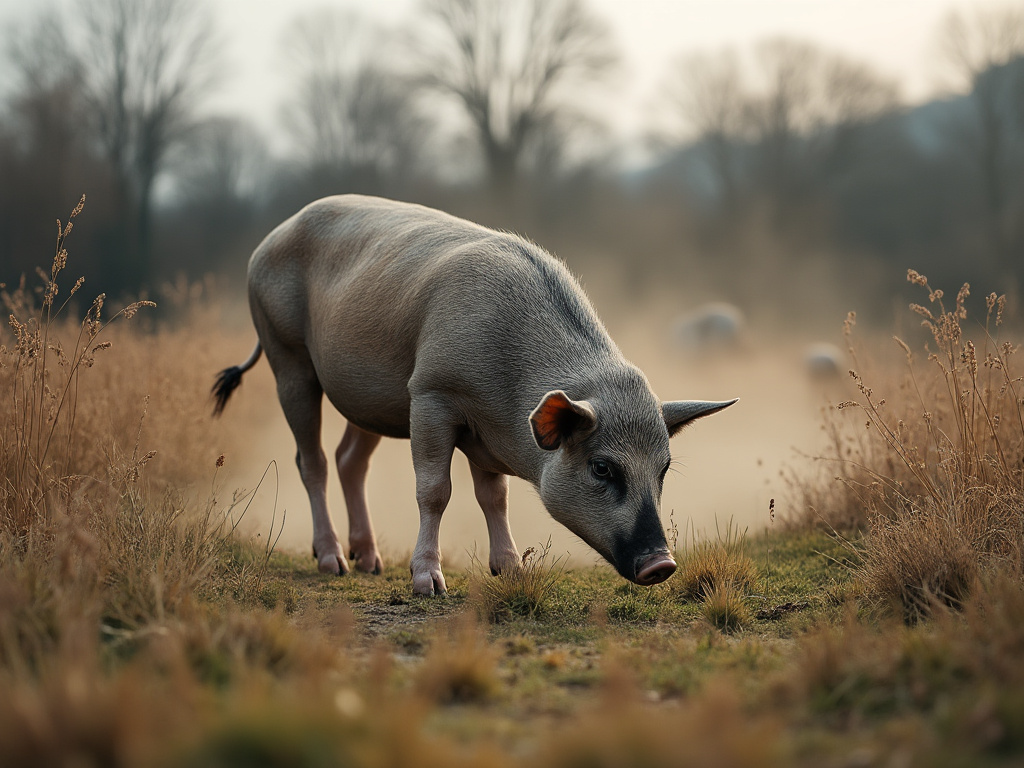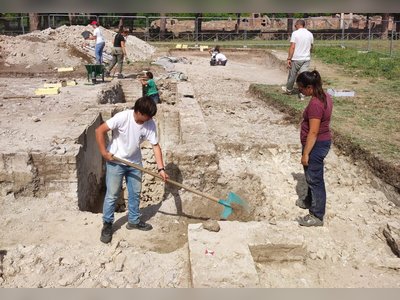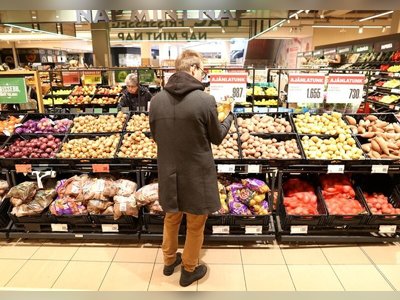
Outbreak of Foot-and-Mouth Disease Triggers Emergency Measures in Hungary
The return of a contagious virus prompts the culling of thousands of livestock as anti-vaccination sentiments rise on social media.
After 14 years without a significant outbreak, the highly contagious foot-and-mouth disease (FMD), which primarily affects cloven-hoofed animals, has re-emerged in several European countries.
Following an outbreak in Germany in January, Slovakia and Hungary reported cases in March, signifying Hungary's first instance of the disease since 1973. The outbreak in northwest Hungary has necessitated the culling or quarantine of thousands of cattle, pigs, goats, and sheep, leading livestock farmers and smallholdings to face severe financial distress.
Social media in Hungary became a platform for rampant misinformation immediately following the announcement of the outbreak, with many users sharing posts claiming the epidemic is a fabrication designed to eliminate domestic livestock under orders from remote elites.
Prominent figures associated with conspiracy theories rapidly gained traction, alleging that the foot-and-mouth disease outbreak was part of a larger scheme against Hungarian agriculture.
A resurgence of interest in an article from June 2021, announcing the opening of the world's first industrial cultured meat factory in Israel, has drawn attention to Hungary's role in the modern agricultural landscape.
The article's sudden spike in shares, particularly within a public Facebook group, has led to speculation that the outbreak may be linked to a plot by the cultured meat industry to dismantle traditional livestock farming practices.
The concept of cultured or lab-grown meat has gained traction globally, especially following the introduction of plant-based meat products in major fast-food chains and regulatory approvals for lab-grown meat in countries such as Singapore.
However, Hungary is currently considering legislation that would ban cultured meat, which many observers argue contradicts European Union guidelines that would require all member states to permit products approved at the EU level.
Critics of government measures cite historical vaccination practices of the past, arguing that the culling of infected animals is unnecessary, given the existence of vaccine options.
While the foot-and-mouth disease vaccine does exist, it is primarily used in regions where the virus is endemic.
Hungary was free from the disease until the early 1970s, and the introduction of such vaccines for livestock has significant implications for market operations and animal trade.
Foot-and-mouth disease is characterized by rapid transmission among susceptible species, primarily via respiratory pathways.
Following the confirmation of symptoms on a farm in Kisbajcs, such as high fever and lesions, the national chief veterinarian ordered the immediate quarantine of the premises and initiated epidemiological investigations.
The authorities have opted for the complete culling of affected livestock as the most effective containment strategy.
On March 21, the virus was also identified at three farms near the Slovak border, prompting further restrictions, including prohibiting grazing within a ten-kilometer radius from the confirmed sites.
The Ministry of Agriculture announced that affected farms would receive financial compensation as part of ongoing measures to prevent further transmission and support economic stability in the affected regions.
Experts and officials have been debating the origins of the virus, with some suggesting it is genetically related to strains identified in Pakistan nearly a decade ago.
Both Hungary and Slovakia have engaged in mutual accusations regarding the source of the outbreak.
As livestock markets face disruptions, nations such as Austria have already restricted imports of Hungarian meat products, affecting Hungary's significant markets in Italy and elsewhere in Europe.
Containment strategies include burying the culled animals at designated sites to minimize environmental and health risks.
Current estimates suggest Hungary could take up to three months to be declared free of the virus, following satisfactory decontamination practices.
Symptoms of the disease include fever, reduced appetite, and the development of painful lesions.
The virus's persistence in various environments poses ongoing risks not only for livestock but also for agricultural economies across Europe.
Following an outbreak in Germany in January, Slovakia and Hungary reported cases in March, signifying Hungary's first instance of the disease since 1973. The outbreak in northwest Hungary has necessitated the culling or quarantine of thousands of cattle, pigs, goats, and sheep, leading livestock farmers and smallholdings to face severe financial distress.
Social media in Hungary became a platform for rampant misinformation immediately following the announcement of the outbreak, with many users sharing posts claiming the epidemic is a fabrication designed to eliminate domestic livestock under orders from remote elites.
Prominent figures associated with conspiracy theories rapidly gained traction, alleging that the foot-and-mouth disease outbreak was part of a larger scheme against Hungarian agriculture.
A resurgence of interest in an article from June 2021, announcing the opening of the world's first industrial cultured meat factory in Israel, has drawn attention to Hungary's role in the modern agricultural landscape.
The article's sudden spike in shares, particularly within a public Facebook group, has led to speculation that the outbreak may be linked to a plot by the cultured meat industry to dismantle traditional livestock farming practices.
The concept of cultured or lab-grown meat has gained traction globally, especially following the introduction of plant-based meat products in major fast-food chains and regulatory approvals for lab-grown meat in countries such as Singapore.
However, Hungary is currently considering legislation that would ban cultured meat, which many observers argue contradicts European Union guidelines that would require all member states to permit products approved at the EU level.
Critics of government measures cite historical vaccination practices of the past, arguing that the culling of infected animals is unnecessary, given the existence of vaccine options.
While the foot-and-mouth disease vaccine does exist, it is primarily used in regions where the virus is endemic.
Hungary was free from the disease until the early 1970s, and the introduction of such vaccines for livestock has significant implications for market operations and animal trade.
Foot-and-mouth disease is characterized by rapid transmission among susceptible species, primarily via respiratory pathways.
Following the confirmation of symptoms on a farm in Kisbajcs, such as high fever and lesions, the national chief veterinarian ordered the immediate quarantine of the premises and initiated epidemiological investigations.
The authorities have opted for the complete culling of affected livestock as the most effective containment strategy.
On March 21, the virus was also identified at three farms near the Slovak border, prompting further restrictions, including prohibiting grazing within a ten-kilometer radius from the confirmed sites.
The Ministry of Agriculture announced that affected farms would receive financial compensation as part of ongoing measures to prevent further transmission and support economic stability in the affected regions.
Experts and officials have been debating the origins of the virus, with some suggesting it is genetically related to strains identified in Pakistan nearly a decade ago.
Both Hungary and Slovakia have engaged in mutual accusations regarding the source of the outbreak.
As livestock markets face disruptions, nations such as Austria have already restricted imports of Hungarian meat products, affecting Hungary's significant markets in Italy and elsewhere in Europe.
Containment strategies include burying the culled animals at designated sites to minimize environmental and health risks.
Current estimates suggest Hungary could take up to three months to be declared free of the virus, following satisfactory decontamination practices.
Symptoms of the disease include fever, reduced appetite, and the development of painful lesions.
The virus's persistence in various environments poses ongoing risks not only for livestock but also for agricultural economies across Europe.
AI Disclaimer: An advanced artificial intelligence (AI) system generated the content of this page on its own. This innovative technology conducts extensive research from a variety of reliable sources, performs rigorous fact-checking and verification, cleans up and balances biased or manipulated content, and presents a minimal factual summary that is just enough yet essential for you to function as an informed and educated citizen. Please keep in mind, however, that this system is an evolving technology, and as a result, the article may contain accidental inaccuracies or errors. We urge you to help us improve our site by reporting any inaccuracies you find using the "Contact Us" link at the bottom of this page. Your helpful feedback helps us improve our system and deliver more precise content. When you find an article of interest here, please look for the full and extensive coverage of this topic in traditional news sources, as they are written by professional journalists that we try to support, not replace. We appreciate your understanding and assistance.











